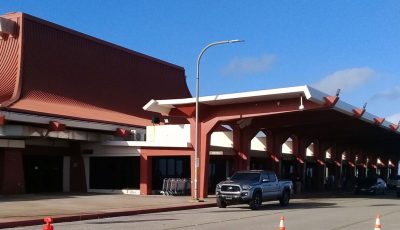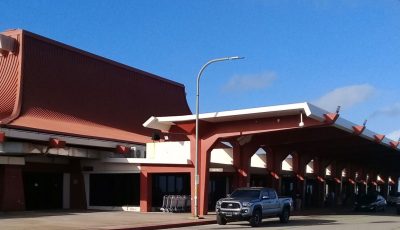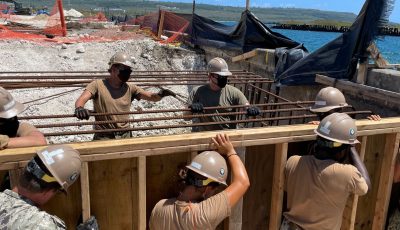CPA remains steadfast in opposing divert initiative
The Commonwealth Ports Authority remains firm in its decision to oppose the U.S. military’s hybrid divert airfield plan, which entails putting up military infrastructure on Saipan and Tinian.
Newly confirmed CPA board member Jose Lifoifoi said “there is no change in the position” of the CPA in opposing the divert plan.
Lifoifoi, who will also serve as CPA board chair, said there is no scheduled meeting yet between the CPA and military representatives on the divert plan.
But a meeting is expected to happen soon, as the CPA board now has a quorum after the confirmation of Lifoifoi during a Senate special session on Friday.
“We expect to meet with them [U.S. military] now that the CPA board is complete,” Lifoifoi said.
Aside from Lifoifoi, Pete P. Reyes and Roman Tudela were also confirmed as CPA board members.
Last February, the CPA met with lawmakers to again emphasize that they will not give in to the military’s plan to have a divert airfield on Saipan as it would interfere with the commercial operation of the Saipan airport.
Saipan is the U.S. Air Force’s preferred alternative for its divert plans in the CNMI, according to a draft environmental impact statement published earlier.
The CPA board of directors essentially said “no” to this alternative in a resolution.
In January, CPA met with Marine Forces Pacific to discuss a proposed airport layout plan inclusive of the military’s aim to build on the Tinian Westfield Airport.
The meeting included CPA, its stakeholders, MARFORPAC, and Federal Aviation Administration officials.
The meeting continues the “informal” dialog that began between the FAA, military working groups and CPA in Seattle, Washington, last November.
MARFORPAC would like CPA to submit an airport layout plan to the FAA that includes its plans to build a parallel runway, an air traffic control tower, power and waste management facilities, fuel storage facilities, and other infrastructure at the Tinian airport.
Also being considered is an amendment to FAA rules to allow restricted airspace over the Tinian airport to support live fire training there. FAA restricts military activity from 1,500 feet above and below ground level within three nautical miles of airports or civilian use.



























